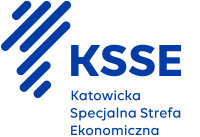Ranking assumptions
Perspektywy Engineering Studies Ranking 2018 is a structured information about 21 most popular engineering studies at Polish academic universities - public and non-public. It has been assumed that all the directions included in the ranking must be conducted in a given unit both at the first level (giving the engineering title) and second degree (giving the master's degree or master's degree if the field is the continuation of the 1st level engineering studies).
It was also assumed that the unit running a given field of study must have at least one right to confer the doctoral degree, regardless of the field and discipline of science, and the unit recruited for a given field of study in the academic year 2017/18. The lack of recruitment data meant that the unit was not evaluated.
The ranking takes into account only popular fields of study, run by a sufficiently large number of universities. It should be noted that studies that graduate with the title of engineer or master's degree are also run by universities.
The set of criteria and indicators included in the Ranking and their percentage weights are determined annually by the Ranking Board on an expert basis.
Detailed description of indicators
PRESTIGE - 12%
Assessment by academic staff (12%) - number of indications of a university in a survey among academic staff (2010 full professors as well as PhDs with habilitation who obtained a title or degree in the last three years). The study will not take into account the votes for universities that are the respondent's primary workplace. The study was conducted via the CAWI method. Each of the respondents defined the field and the discipline of science in which he currently conducts classes at the university. On this basis, the voice of a given person was a voice in a given group of fields of study. The research was conducted by the Perspektywy Education Foundation.
ALUMNI SITUATION ON THE JOB MARKET - 15%
Alumni’s Economic Situation (15%) - the criterion measured by the employment rate of graduates in a given field of study and the rates of their earnings - according to the national survey "Alumni’s Economic Situation" conducted by the Ministry of Science and Higher Education with the use of Insurance Institution (ZUS).
ACADEMIC POTENTIAL - 17%
Parametric evaluation (10%) - the indicator reflects the assesment given to a university unit by the Scientific Units Evaluation Committee appointed by the Ministry of Science and Higher Education. The assesment is awarded to the unit, not to the field of study, therefore in the case of multidirectional units, this unit will have the same ranking indicator in all groups of fields of study in which it is classified. Source: KEJN data.
Rights to confer academic degrees (5%) - the indicator reflects the right to confer PhD degrees, both pure and with habilitation within the field of studies conducted by the unit. The highest notes are given to the units giving degrees with habilitation in the fields directly connected with the disciplines ranked. The unit confering doctoral degrees with habilitation was weighted 6. The unit confering doctoral degrees without habilitation was weighted 4. The units having rights to confer degrees in other fields without direct connection with the fields ranked were given weights 2 and 1 respectively POL-on base.
Academic degrees confered (2%) – the number of obtained – PhD degrees (with a weight of 1) and habilitated doctor (with a weight of 1.5), in relation to the number of employees employed in the unit. Source: POL-on base.
SCIENTIFIC EFFICIENCY - 20%
Publications (8%) - number of publications included in the SCOPUS database in 2014-17. Each publication is assigned (according to the classification of the SCOPUS database) to the relevant field of science, including the quality of the title (journal) where the publication was published. Source: SCOPUS database.
Citability (8%) - the number of publications cited for the years 2014-17 in SCOPUS database to the number of these publications. Source: Sci-Val as at 21.02.1018.
FWCI (Field-Weighted Citation Impact (4%) - the indicator defines the relation of the number of citations of the publication to the average number of citations obtained by similar publications indexed in the Scopus database for the years 2014-17. Source: Sci-Val as at 21/02/2018.
DIDACTIC POTENTIAL - 28%
The availability of highly qualified staff for students (5%) - the number of academic teachers (PhD with 1.0 weight, PhD with habilitation with a weight of 1.5 and a professors with a weight of 2.0) in relation to the number of students a university (full-time students with 1.0 weight, part-time students with a weight of 0.6). Source: POL-on database, university surveys.
Quality accepted for studies (15%) - indicator measured by the results of secondary school-certifications of the first year students who were admitted to the university units and started studies on October 1, 2017. The indicator shows the quality of the university itself (as the choice of the most talented) and creates this quality as the best students affect the level of the academic process.
Accreditations (8%) - international accreditations are taken into account (ABET, RIBA, EUR-ACE, ECTN) and the current distinguishing marks (directional or institutional) held by the unit, awarded by the Polish Accreditation Commission.
INNOVATION - 8%
Patents and protection rights (8%) - number of patents and protection rights granted to the Patent Office of the Republic of Poland in 2017 with reference to the number of professors, PhD’s with habilitation and PhDs employed in the unit as their basic place of work.
Perspektywy Engineering Studies Ranking 2018 includes 6 indicators grouped into six criteria:
- PRESTIGE - measured by: evaluation by survey of faculty staff opinion;
- ALUMNI SITUATION ON THE JOB MARKET - measured by the study "Alumni’s Economic Situation " (conducted by by the Ministry of Science and Higher Education);
- ACADEMIC POTENTIAL - indicators: parametric evaluation of the Ministry of Science and Higher Education, rights to confer academic degrees, degrees awarded;
- SCIENTIFIC EFFICIENCY - indicators: publications, citations, FWCI (Field-Weighted Citation Impact);
- DIDACTIC POTENTIAL - indicators: quality thye admitted for studies, availability of highly qualified academic staff to students and accreditations;
- INNOVATION - indicator: patents and protective rights.
List of fields of study
Fields of study included in the Engineering & Technology Ranking Perspektywy 2018:
- Automation and Robotics
- Architecture and Urban Planning
- Biotechnology
- Civil Engineering
- Electrotechnics
- Electronics and Telecommunication
- Power Engineering
- Technical Physics
- Geodesy and Cartography
- Mining and Geology
- Biomedical Engineering
- Chemical and Process Engineering
- Material Science
- Environmental Engineering
- Computer Science
- Logistics
- Mechanical Engineering
- Mechatronics
- Chemical Technology
- Transport
- Management and Production Engineering
















